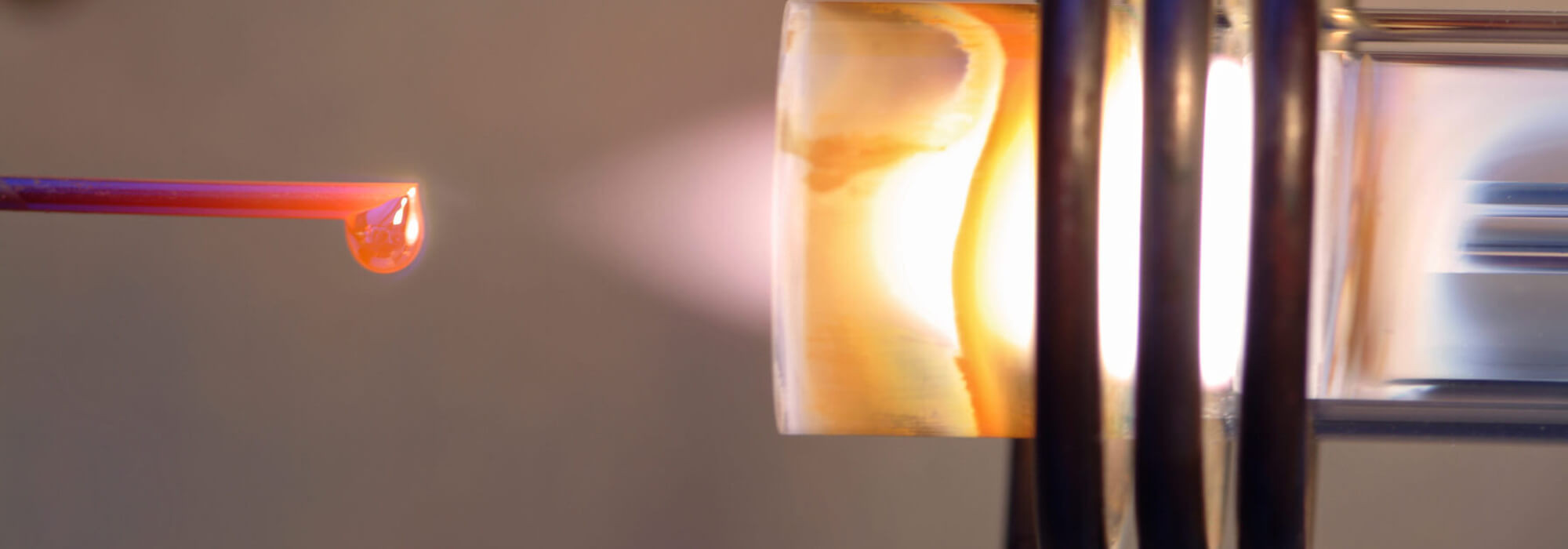Thermal Barrier Coatings
Development of Alternative Thermal Barrier Coatings for Diesel Engines
- Hamed Samadi
The use of thermal barrier coatings (TBCs) to increase the combustion temperature in diesel engines has been pursued for over 20 years. Increased combustion temperature can increase the efficiency of the engine, decrease the CO and (possibly) the NOx emission rate. The most common material used in turbine engines for thermal barrier coatings (TBCs) is Yttria Partially Stabilized Zirconia (Y-PSZ). However, in diesel engines Y-PSZ TBCs have not met with wide success. To reach the desirable temperature of 850-900˚C in the combustion chamber from the current temperature of 400-600˚C, a coating with a thickness of approximately 1mm is required.
Temperature gradient in coatings after applying heat flux
This introduces different considerations than in the case of turbine blade coatings, which are on the order of 100µm thick. Of the many factors affecting the durability and failure mechanism of TBCs, in service and residual stresses play an especially important role as the thickness of the coating increases. For decreasing the residual stress in the system, a multi-layer coating is helpful.
Among possible alternative materials, one of the most promising is mullite. Mullite has excellent thermo-mechanical behavior; however its low coefficient of thermal expansion creates a large mismatch with the substrate. To address this problem, multilayer systems may be used to minimize the thermal expansion mismatch stresses while maintaining chemical and phase stability.
Materials selection in the design of a multilayer coating employing relatively low cost materials with complementary thermal properties is described. To minimize the stress levels during deposition and under operating conditions while achieving the desired temperature gradient through the coating, numerical models are being developed to describe the internal stress levels for different combinations of layer thicknesses. Finally, progress on identifying appropriate deposition conditions for these materials will be presented.
Thermo-mechanical behaviour of bimodal structured thermal barrier coatings
- Reza Soltani
Thermally sprayed ceramic coatings deposited from nanostructured feedstock powder have often demonstrated improved properties relative to coatings produced from conventional powders. These types of coatings have been reported to exhibit better wear resistance and higher adhesion strength compared to conventional deposits. In order to apply these type of coatings on blades of turbine engines and diesel engine combustion chambers, the thermo-mechanical properties of plasma sprayed, bimodal structured, yttria stabilized zirconia coating was investigated. Creep strain and creep rate was measured using free standing thick coatings (3 mm) loaded in four-point bend configuration at different temperatures from 800 to 1200 ºC in air under a range of loads. Creep exponent and activation energy of this new coating was measured and results were compared to the behavior of deposits produced from conventional feedstock. Under same test conditions this new structure shows a lower creep strain than its counterpart. The microstructure of coating (based on splat thickness) was correlated to the creep strain of deposits and a model was developed to predict the material response, as well.

